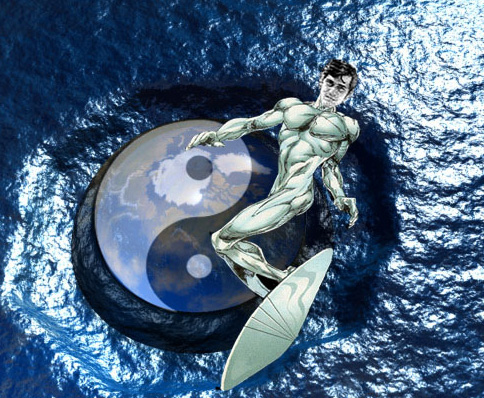I was talking with a friend of mine about treasure hunting and how often you can find old coins laying on the ground as if they were just dropped. He's always been very much into metal detectors and searching for buried treasure and most of the stuff he finds is only a few inches below the surface. He claims, every now and then, he'll find an old coin right there on the ground ready to be picked up.
This got me thinking about all the old coins I found sitting on top of the ground after a hundred years of hiding. One coin that comes to mind was a penny I found, sitting on the ground at the town feed mill when I was a small child. It was dated 1864. I remember the date because it was in 1964 when I found it. I assume it was lost for a hundred years before I saw it sitting heads up in the feed lot where cars and trucks drive every day.
It seems this type of thing happens more often than you think. The vast majority of old coins are found on the surface. Logic dictates they weren't sitting there for a century without notice. They somehow resurface and get picked up by people not even looking for them. It's not just coins that show up out of nowhere but coins have dates on them, which gives you a time frame indicating how long they were lost.
All this was going through my head as we continued to talk and share anecdotal stories about found pennies. It seems my friend had a similar experience with a penny he found in 2003 that was dated 1903. Now we're getting somewhere. Two pennies found in different places, under different circumstances, both of which were found on ground surface after missing for 100 years.
Any treasure hunter will tell you coins, by their own weight, will sink into the earth, or be covered up by earth, and logic dictates the newer coins will be closer to the surface. I'm not so sure about that. Rather than slow motion quicksand, where the deeper you dig the older things are, the earth is more like slow motion oatmeal in a microwave where the earth is in a constant state of cyclic motion.
You can argue that those pennies were recently dropped before they were found. It's possible but nowhere near probable. Check your pockets and count how many coins you have that are 100 years old. Pennies are the most discarded coin, only because their value is next to nothing. What are the odds that a coin someone might accidentally drop is 100 years old?
If a penny can be dropped on the ground, sink or be covered over by earth and resurface 100 years later, and the same thing happens to another penny 40 years later at a different location, it stands to reason 100 years could be a complete cycle for the size and weight of a copper penny.
Does size and weight matter? I don't know. I can't find any studies done on this phenomenon and even seasoned treasure hunters will tell you the deeper you dig the older the artifact, even when they themselves have found older coins on the surface with more recently minted coins a few inches deeper in the same area.
One way to put this theory to the test is to go where people gathered a hundred years ago and look around. In 1917 Wilson was on his second term and the US officially got involved in The Great War and men of fighting age were drafted. Old carnival grounds, train stations, and parks that haven't been renovated might be good places to look.
If you're still reading this and want to give it a go, don't bring a metal detector. If my theory is correct, odds are good you'll find coins from that era on open ground. Let me know if you find something.
Good luck
Sunday, April 16, 2017
Subscribe to:
Post Comments (Atom)


No comments:
Post a Comment